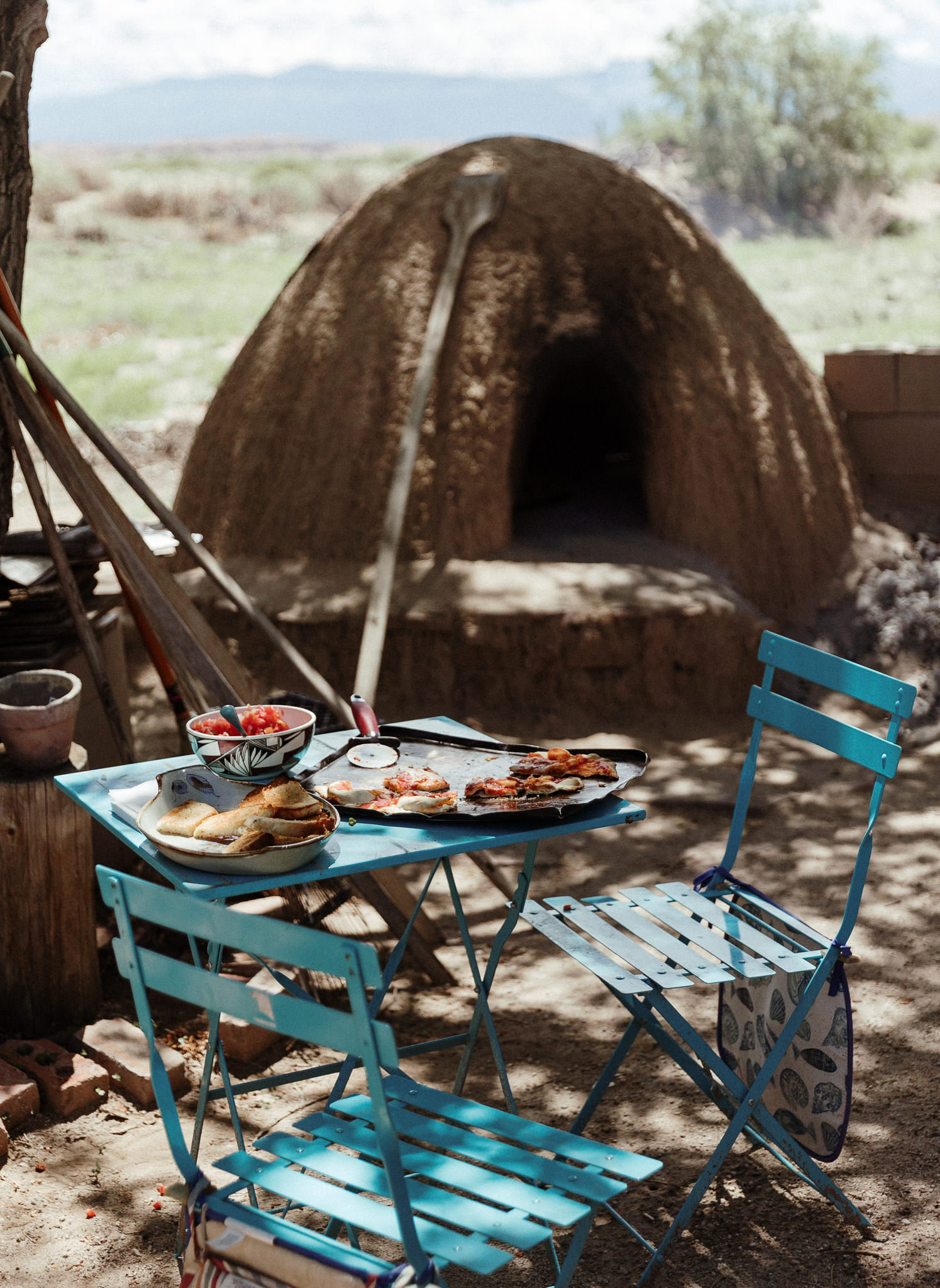We will travel along Black Mesa to the Ohkay Owingeh Pueblo, formerly known as the San Juan Pueblo. Recognized as the first capital of New Mexico, this historic Pueblo is located at the confluence of the Rio Grande, Ojo Caliente, and Chama rivers, and is north of Santa Fe.
The first thing you will notice as you walk into Naranjo home is the aroma of rising Horno bread and the welcoming smiles of Norma, Hutch, and daughter Nina. Soon you will be offered a hot drink and you will have a moment to take in your surroundings.
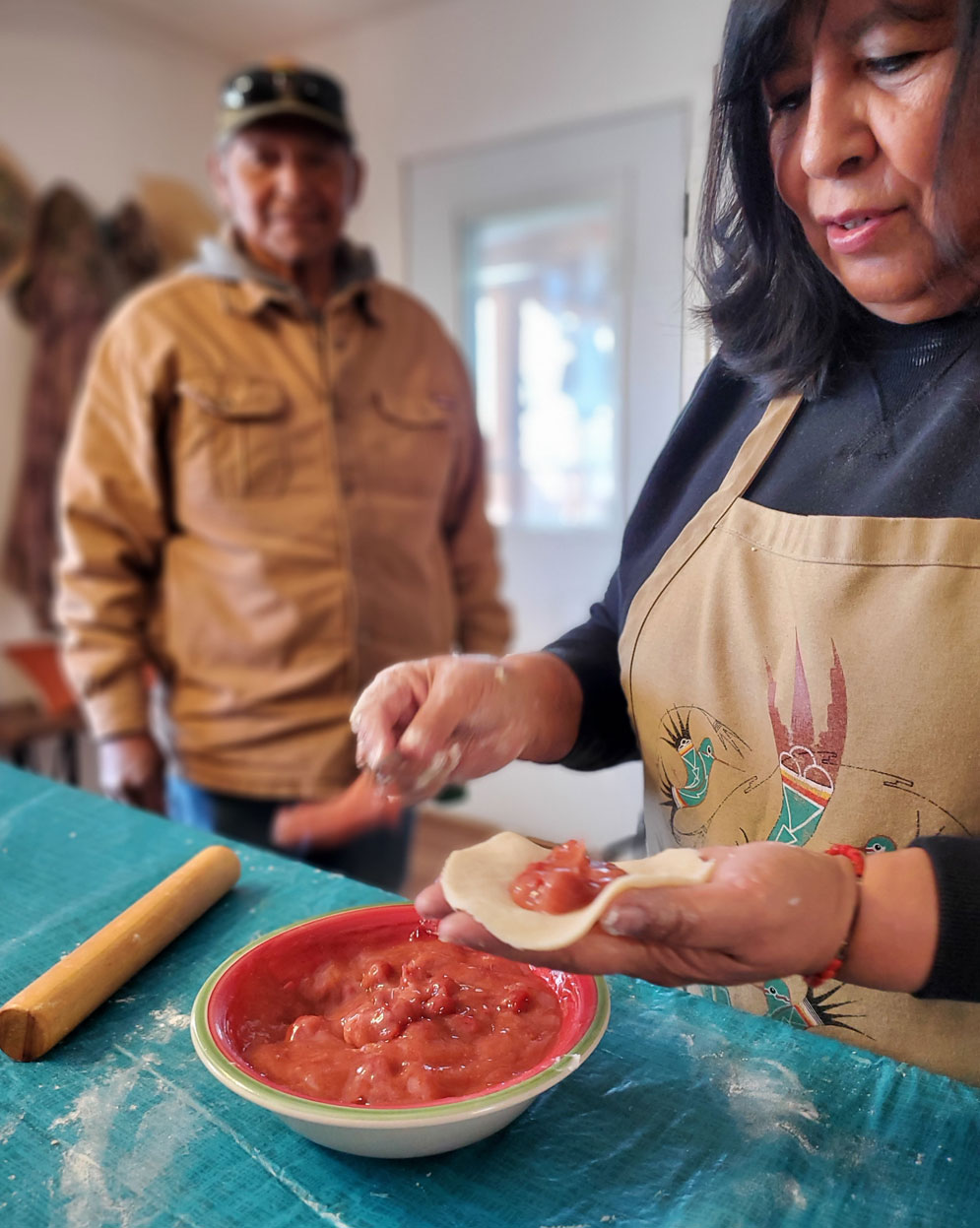
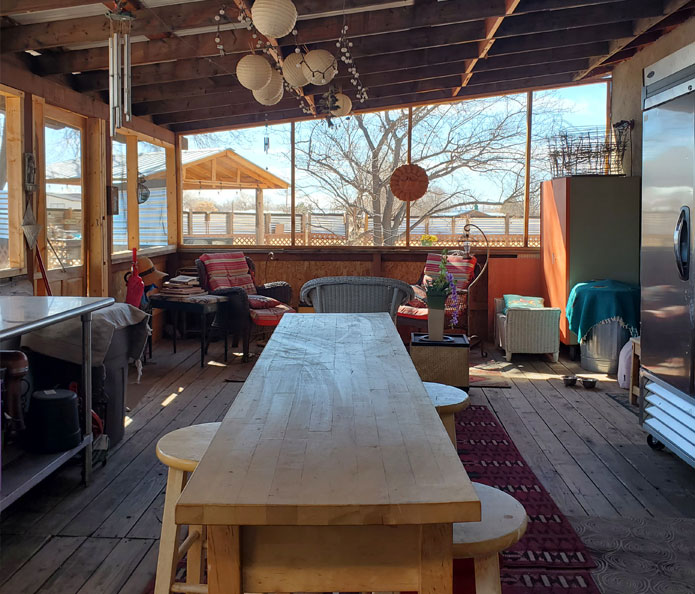
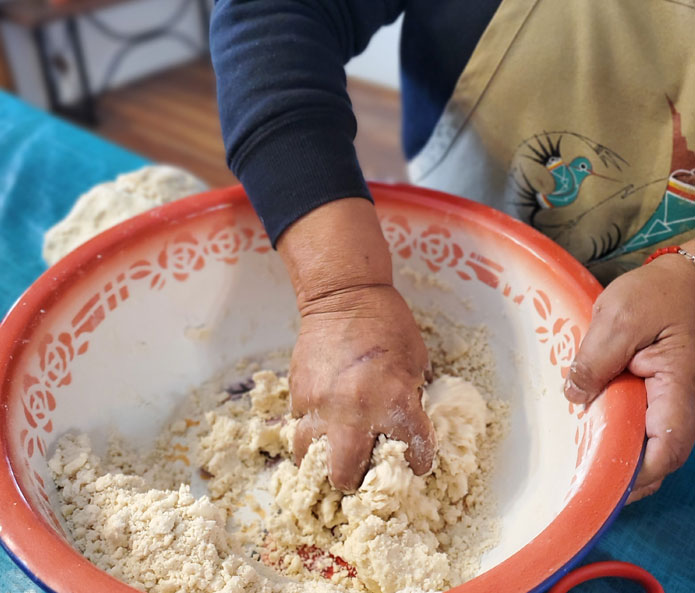
Norma will then guide you on a true culinary adventure. You will relax instantly as your hands knead the dough for seasonal treats and stuff them with locally harvested prune and cherry filling. In this intimate setting, Norma will share the history of Ohkay Owingeh Pueblo, “the place of strong people,” and their efforts to preserve their culture.
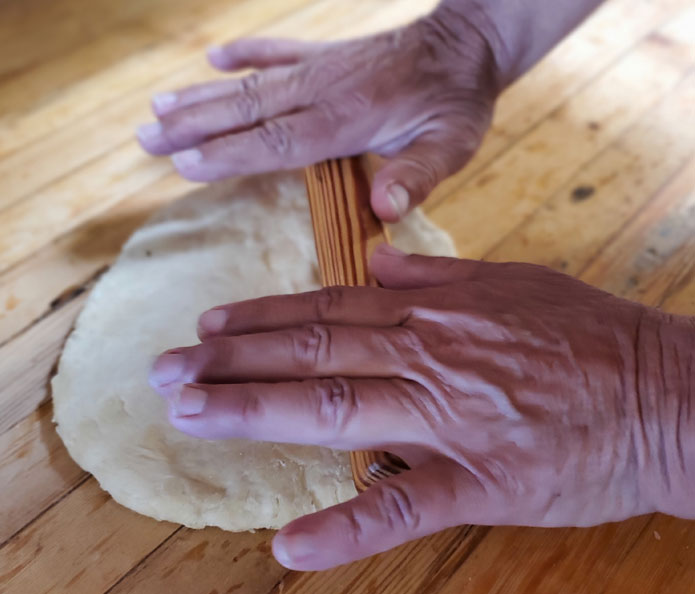
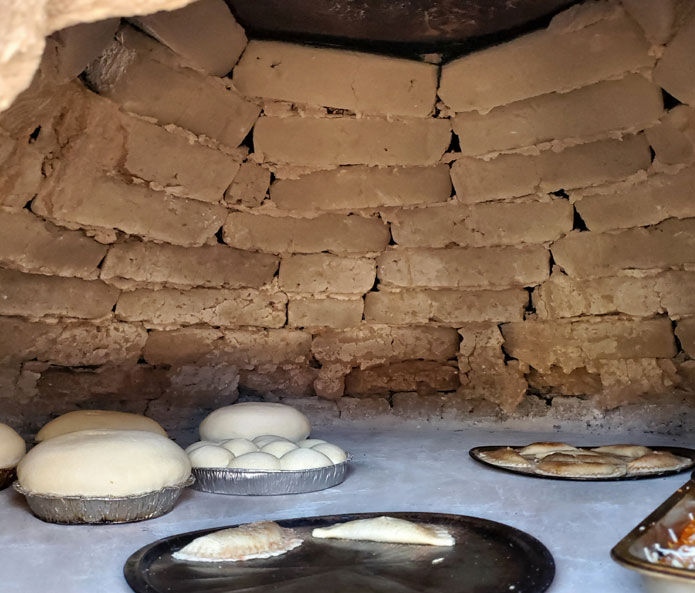
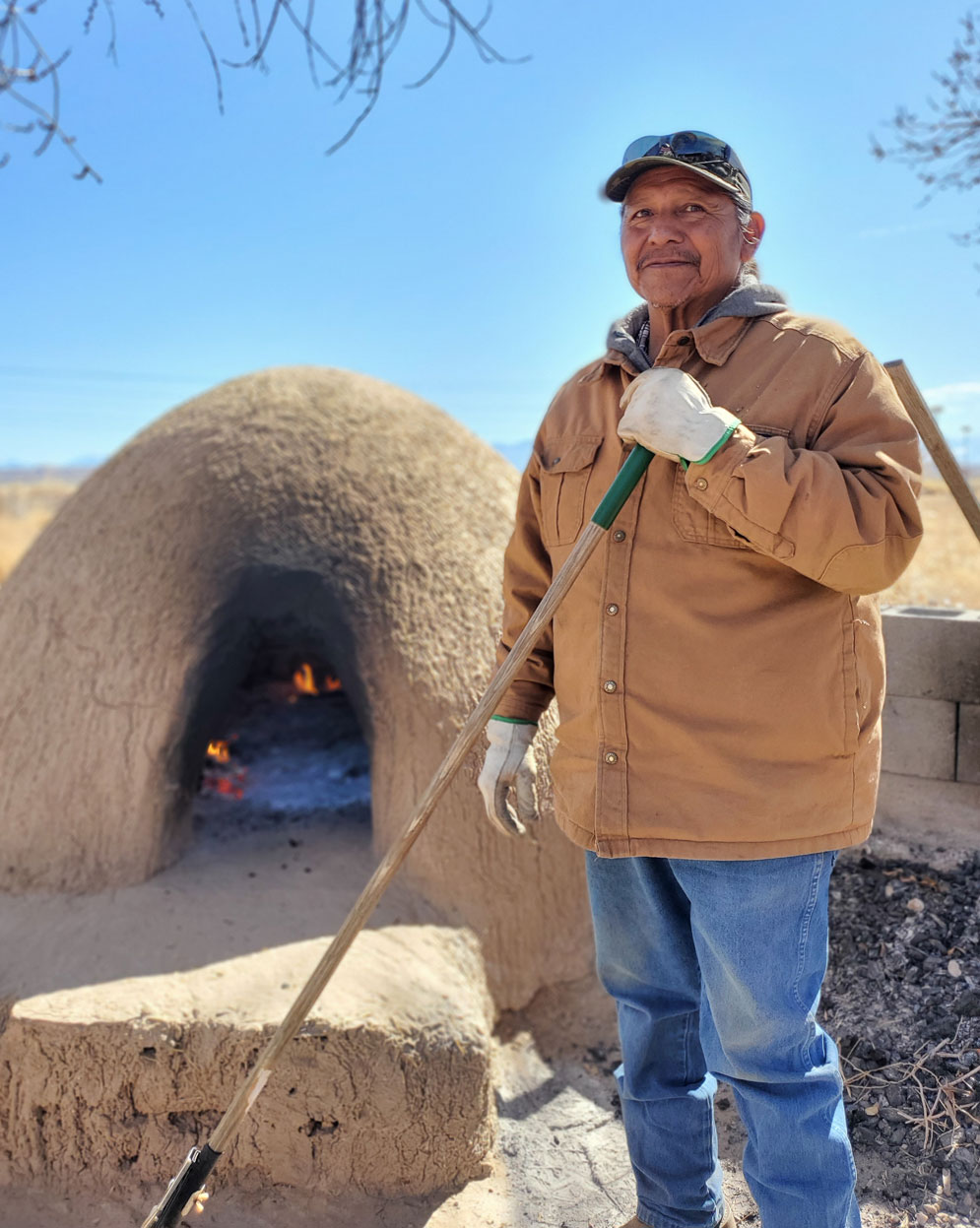
Soon you will join Hutch as he tends to Horno ovens. These beehive shaped adobe ovens were introduced by the Spanish settlers to the Pueblo communities in the 1600s. The ovens are heated by hot river stones encased in the floor which warm the adobe to an even temperature. You will be given the chance to load up the ovens with bread, pastries, and gourmet surprises. Lunch will be a delicious confluence of laughs, stories, and locally soured dishes that are relevant to the changing seasons.
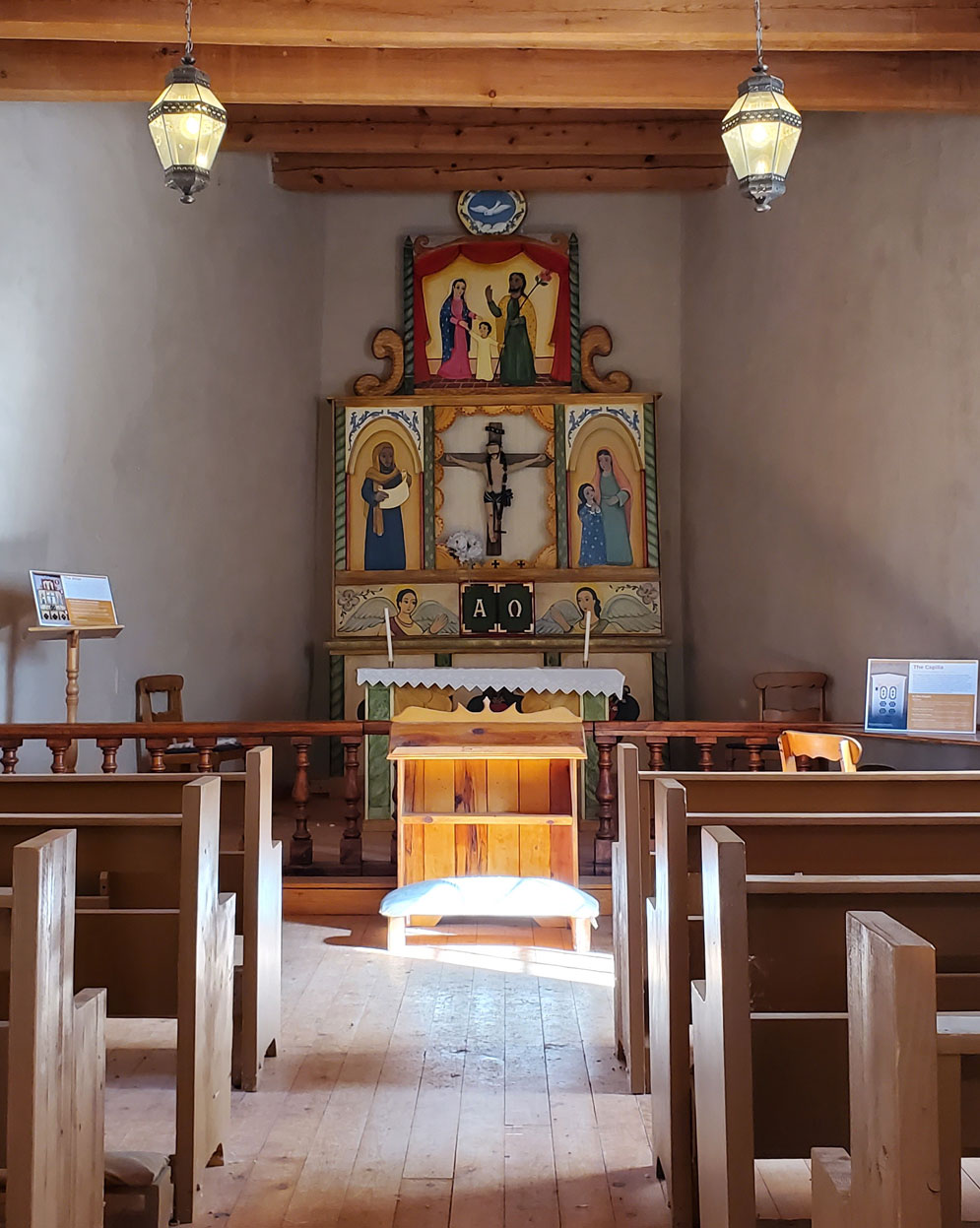

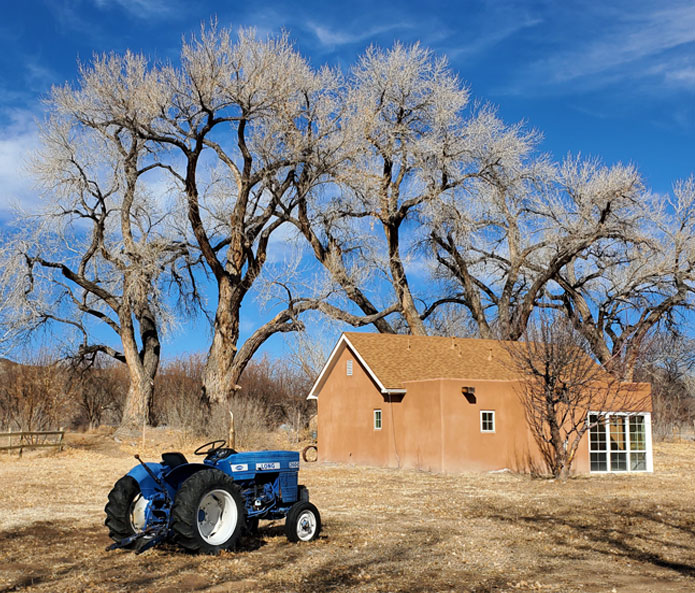
Next we will travel just a few miles north to the Los Luceros Historical Site which borders the Rio Grande river. This area has been home to indigenous peoples, the Luceros and Ortiz families, and socialite turned farmer, Mary Cabot Wheelwright. The 148 acre ranch still houses many of the original buildings, including a restored Capilla “chapel”(1886 AD) and a 5,700 square foot Territorial Style hacienda (1860-1870 AD). You will travel back in time surrounded by orchards of fruit trees, towering Cottonwoods, and rare views of the Rio Grande and Jemez Mountains. Los Luceros is a true historic gem.
During this full day tour your senses will be satiated with local flavors, limitless views, historical stories, sun drenched adobe walls, and the rustling leaves of fruit trees. We hope to lift your soul and ground your heart as we peel back the many layers of New Mexico, and immerse you in an experience that runs as deep as our canyons and as wide as our horizons.
THE FEASTING PLACE
Norma & Hutch Naranjo
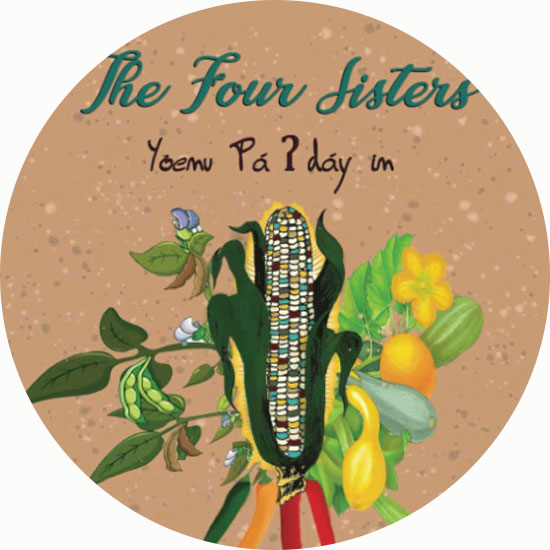
Norma and Hutch Naranjo’s business, The Feasting Place, hosts people from all over the world who come to experience the culture, traditional knowledge, and sustainability of their way of life. The Feasting Place has been named Small Business of the Year twice by the Small Business Development Center. Norma and Hutch regularly cater events for large organizations such as SWAIA, the National Governors Conference, the Museum of Indian Arts and Culture, the Wheelwright Museum, and the Poeh Museum. The Feasting Place is certified by New Mexico True. The business has been featured in New Mexico Magazine, Local Flavor, Edible New Mexico, Land Water People Time, and other magazines.
Hutch and Norma are also farmers and ranchers, growing chicos, chile, squash, watermelon, and other vegetables. They also raise cattle and chickens that sustain them through the winter. Their way of life reflects sustainable traditions long held by Pueblo and Hispanic communities in Northern Mexico for centuries. Don’t forget to take home Norma’s Cook Book “The Four Sisters,” a wonderful collection of her most memorable recipes.

